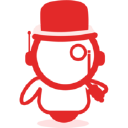How I Started A Wildly Successful Food Tour Business
Hello! Who are you and what business did you start?
Hi, I’m Jessica Baumgart, and in 2017 I founded Delicious Denver Food Tours to connect Denver locals and visitors to my city’s amazing food scene.
Many people don’t know what a food tour is, although they are the fastest growing sector in tourism. Food tours are walking (sometimes driving or biking) city tours that feature local restaurants, dishes and chefs.

I started with our Downtown Denver Food Tour, which is a three-hour walking tour through the heart of the Mile High City with stops at six local restaurants. At each restaurant stop, guests enjoy a curated tasting, and we talk about the chefs, owners and people behind the food scene here in Denver.
From the Downtown Food Tour, I expanded into offering our

Download the report and join our email newsletter packed with business ideas and money-making opportunities, backed by real-life case studies.

Download the report and join our email newsletter packed with business ideas and money-making opportunities, backed by real-life case studies.

Download the report and join our email newsletter packed with business ideas and money-making opportunities, backed by real-life case studies.

Download the report and join our email newsletter packed with business ideas and money-making opportunities, backed by real-life case studies.

Download the report and join our email newsletter packed with business ideas and money-making opportunities, backed by real-life case studies.

Download the report and join our email newsletter packed with business ideas and money-making opportunities, backed by real-life case studies.

Download the report and join our email newsletter packed with business ideas and money-making opportunities, backed by real-life case studies.

Download the report and join our email newsletter packed with business ideas and money-making opportunities, backed by real-life case studies.




















